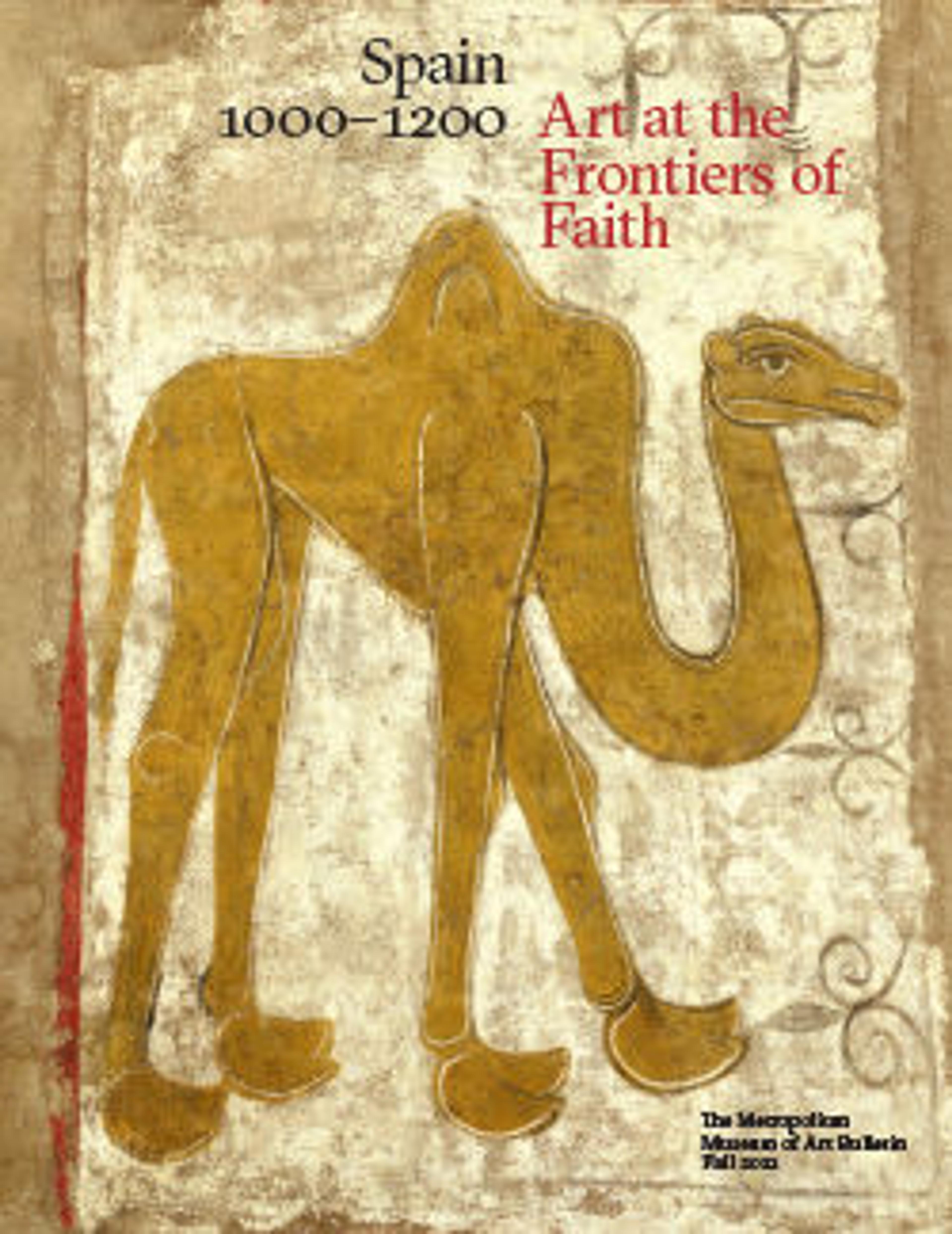Bifolium from the Andalusian Pink Qur'an
This bifolio belongs to a thirteenth-century Spanish manuscript named the "Pink Qur’an," after the hue of the paper. Each folio consists of five lines of text in bold maghribi script with diacritical and vocalization marks in gold outlined in brown, blue, and green. Verse numbers (Sura 7: part of 46–47 and 48–50) appear within gold discs in the form of blue abjad letters outlined in white (the abjad system assigns numerical values to the twenty-eight letters of the Arabic alphabet). The prostration (sajada) mark is a teardrop–shaped element in gold. The folio also contains the word hubus, or "pious foundation," which is pricked with a needle in the top left and right corners. The fine, consistent calligraphy, extensive use of gold, and elaborate illumination suggest that the Pink Qur’an was made for a royal or noble patron in Granada or Valencia. Unlike the traditional square format of Qur’ans from Spain and North Africa, the folios of the Pink Qur’an are rectangular. Another departure from convention is the use of paper, as parchment continued to be used for Qur’ans well into the fourteenth century in this region. The paper is believed to have come from the town of Javita, thirty-five miles southwest of Valencia, reportedly the site of the earliest paper mill in Spain.
Artwork Details
- Title:Bifolium from the Andalusian Pink Qur'an
- Date:ca. 13th century
- Geography:Country of Origin Spain
- Medium:Ink, gold, silver, and opaque watercolor on paper
- Dimensions:H. 12 1/2 in. (31.8 cm)
W. 19 3/4 in. (50.2 cm) - Classification:Codices
- Credit Line:Purchase, Friends of Islamic Art Gifts, 2017
- Object Number:2017.232
- Curatorial Department: Islamic Art
More Artwork
Research Resources
The Met provides unparalleled resources for research and welcomes an international community of students and scholars. The Met's Open Access API is where creators and researchers can connect to the The Met collection. Open Access data and public domain images are available for unrestricted commercial and noncommercial use without permission or fee.
To request images under copyright and other restrictions, please use this Image Request form.
Feedback
We continue to research and examine historical and cultural context for objects in The Met collection. If you have comments or questions about this object record, please contact us using the form below. The Museum looks forward to receiving your comments.
